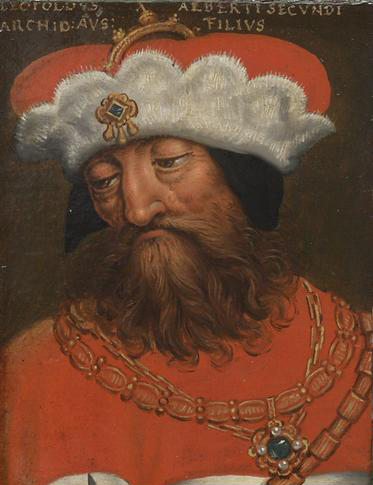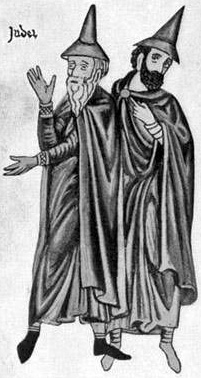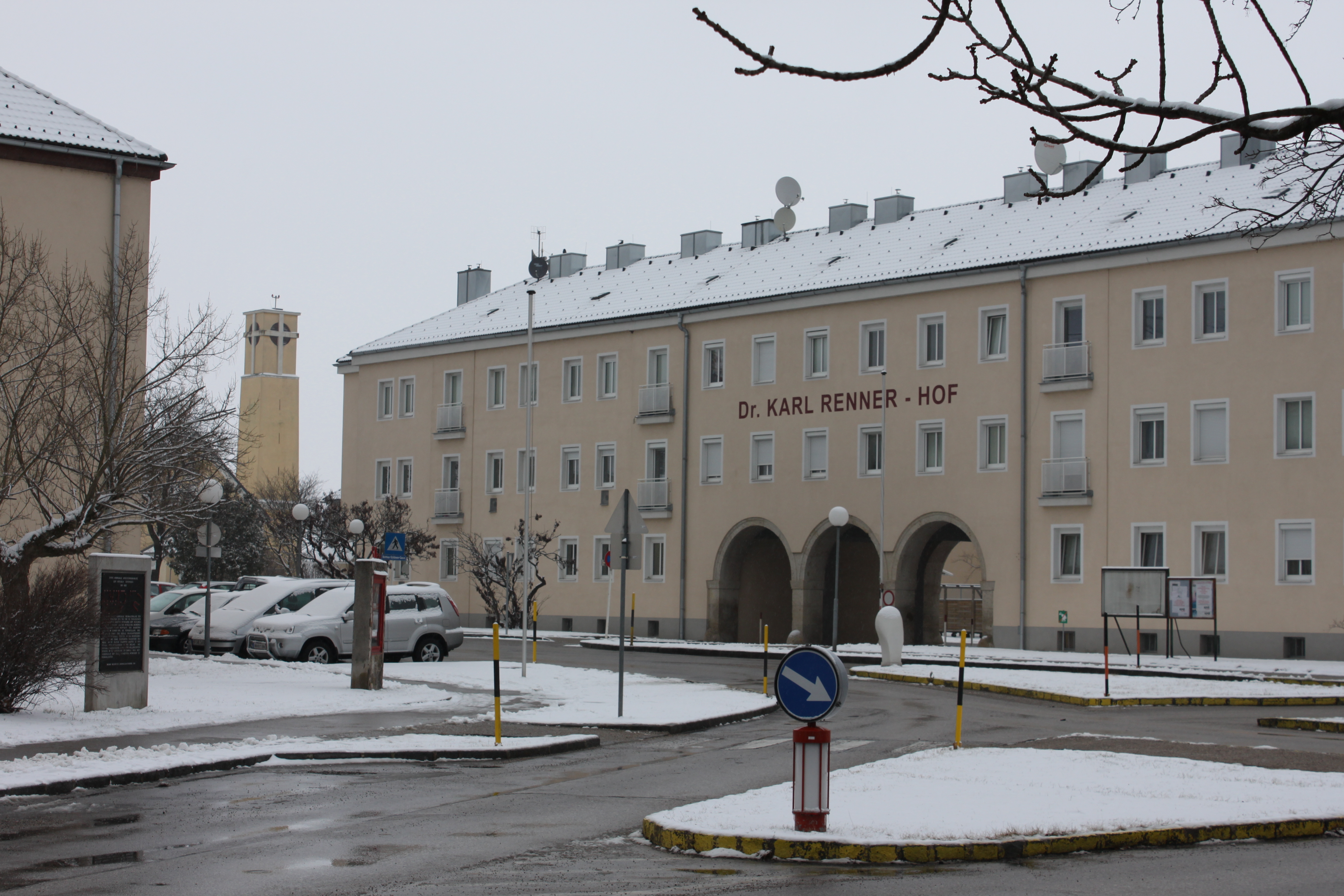|
Margaret Of Austria, Electress Of Saxony
Margaret of Austria (c. 1416 – 12 February 1486), a member of the House of Habsburg, was Electress consort of Saxony from 1431 until 1464 by her marriage with the Wettin elector Frederick II. She was a sister of Emperor Frederick III. Life Born in Innsbruck, Margaret was the eldest daughter of the Inner Austrian duke Ernest the Iron (1377–1424) and his second wife, the Piast princess Cymburgis of Masovia (1394/97–1429). Upon her father's death, she and her siblings were raised under the tutelage of their uncle Duke Frederick IV of Austria. At Wiener Neustadt, young Margaret was betrothed to Elector Frederick II, heir of both the Saxe-Wittenberg electorate and the Margravate of Meissen, not long after his accession in 1428; the wedding took place on 3 June 1431 in Leipzig. The conjugal bond with the Habsburgs strengthened her husband's position, particularly when Margaret's brother Duke Frederick V of Austria was elected King of the Romans in 1440 (as Frederick III) ... [...More Info...] [...Related Items...] OR: [Wikipedia] [Google] [Baidu] |
Anton Boys
Anton Boys or Anton WaissWenzel II., Gemahl v. Gutta, König v. Böhmen at Kulturpool (born between 1530 and 1550 – died after 1593)Anton Boys at the Netherlands Institute for Art History was a Flemish people, Flemish painter, draughtsman and printmaker who after training in Antwerp had an international career, which brought him to Italy, Spain, Prague, Innsbruck and Landshut. He was court painter to Ferdinand II, Archduke of Austria, Archduke Ferdinand II of Austria for whom he realised a series of contemporary and historical portraits of members of the imperial House of Habsburg. Many of these portraits ... [...More Info...] [...Related Items...] OR: [Wikipedia] [Google] [Baidu] |
Inner Austria
Inner Austria (; ; ) was a term used from the late 14th to the early 17th century for the Habsburg hereditary lands south of the Semmering Pass, referring to the Imperial duchies of Styria, Carinthia and Carniola and the lands of the Austrian Littoral. The residence of the Inner Austrian archdukes and stadtholders was at the ''Burg'' castle complex in Graz. Geography The Inner Austrian territory stretched from the northern border with the Archduchy of Austria on the Alpine divide over Upper and Lower Styria down to Carniola, where the Lower and White Carniolan lands (the former Windic March) bordered on the Habsburg Kingdom of Croatia. In the west, the Carinthian lands stretched to the Archbishopric of Salzburg and the Habsburg County of Tyrol, while in the east, the Mur River formed the border with the Kingdom of Hungary. In the south, the County of Görz, which had passed to the House of Habsburg in 1500, and Duino (''Tybein'') bordered on the ''Domini di Terraferma'' o ... [...More Info...] [...Related Items...] OR: [Wikipedia] [Google] [Baidu] |
History Of The Jews In Germany
The history of the Jews in Germany goes back at least to the year 321 CE, and continued through the Early Middle Ages (5th to 10th centuries CE) and High Middle Ages (c. 1000–1299 CE) when Jewish immigrants founded the Ashkenazi Jewish community. The community survived under Charlemagne, but suffered during the Crusades. Accusations of well poisoning during the Black Death (1346–1353) led to mass slaughter of German Jews, while others fled in large numbers to Poland. The Jewish communities of the cities of Mainz, Speyer and Worms became the center of Jewish life during medieval times. "This was a golden age as area bishops protected the Jews, resulting in increased trade and prosperity." The First Crusade began an era of persecution of Jews in Germany. Entire communities, like those of Trier, Worms, Mainz and Cologne, were slaughtered. The Hussite Wars became the signal for renewed persecution of Jews. The end of the 15th century was a period of religious hatred that ascr ... [...More Info...] [...Related Items...] OR: [Wikipedia] [Google] [Baidu] |
Meissen
Meissen ( ), is a town of approximately 30,000 about northwest of Dresden and 75 km (46 mi) west of Bautzen on both banks of the Elbe river in the Free State of Saxony, in eastern Germany. Meissen is the home of Meissen porcelain, the Albrechtsburg castle, the Gothic architecture, Gothic Meissen Cathedral and the Meissen Frauenkirche. The ''Große Kreisstadt'' is the capital of the Meissen district. History It grew out of the early Polabian Slavs, West Slavic settlement of ''Miśni'' inhabited by Glomatians and was founded as a German town law, German town by King Henry the Fowler in 929. In 968, the Diocese of Meissen was founded, and Meissen became the episcopal see of a bishop. The Catholic bishopric was suppressed in 1581 after the diocese accepted the Protestant Reformation (1559), but re-created in 1921 with its seat first at Bautzen and now at the Katholische Hofkirche in Dresden. In 965, the Margraviate of Meissen, a frontier march of the Holy Roman Empire, ... [...More Info...] [...Related Items...] OR: [Wikipedia] [Google] [Baidu] |
Albert II Of Germany
Albert the Magnanimous , elected King of the Romans as Albert II (10 August 139727 October 1439), was a member of the House of Habsburg. By inheritance he became Albert V, Duchy of Austria, Duke of Austria. Through his wife (''jure uxoris'') he also became King of Hungary, Croatia, Bohemia, and inherited a claim to the Duchy of Luxembourg. He played a significant role in the Hussite Wars, assisting his father-in-law Sigismund, Holy Roman Emperor, Sigismund and suffering defeats like the Battle of Domažlice in 1431. Crowned King of Hungary in 1438, he struggled to control Kingdom of Bohemia, Bohemia and fought against Polish-Bohemian forces. He later became King of the Romans but died in 1439 while defending Kingdom of Hungary (1301–1526), Hungary from the Ottoman Empire, Ottomans. His reign saw anti-Hussite and anti-Jewish persecutions, continuing medieval Crusades of the 15th century, crusades against perceived heretics. Austrian Jews faced increased taxation and expulsions, ... [...More Info...] [...Related Items...] OR: [Wikipedia] [Google] [Baidu] |
Elizabeth Of Austria (1436–1505)
Elizabeth of Austria (; ; ; c. 1436 – 30 August 1505) was Queen of Poland and Grand Duchess of Lithuania as the wife of King Casimir IV of Poland. Orphaned at an early age, she spent her childhood in the court of Holy Roman Emperor Frederick III. As one of the three surviving grandchildren of Emperor Sigismund, she had a strong claim to the kingdoms of Hungary and Bohemia. That made her an attractive bride for a Polish prince. The Polish nobility, seeking to increase Polish influence in Hungary and Bohemia, pursued marriage with Elizabeth since she was born and finally succeeded in 1454. Her marriage to Casimir was one of the most successful royal marriages in Poland. She gave birth to thirteen children, eleven of whom survived to adulthood. Four of her sons were crowned as kings. Early life Tumultuous childhood Elisabeth was the daughter of Albert II of Germany, Archduke of Austria, and his wife Elizabeth of Luxembourg, daughter of Emperor Sigismund. The exact date of he ... [...More Info...] [...Related Items...] OR: [Wikipedia] [Google] [Baidu] |
Aachen Cathedral
Aachen Cathedral () is a Catholic Church, Catholic church in Aachen, Germany and the cathedral of the Diocese of Aachen. One of the oldest cathedral buildings in Europe, it was constructed as the royal chapel of the Palace of Aachen of Holy Roman Emperor, Emperor Charlemagne, who was buried there in 814. From 936 to 1531, the original Palatine Chapel, Aachen, Palatine Chapel saw the coronation of thirty-one List of German monarchs, German kings and twelve queens. Later, much expanded, it was a Minster (church), minster and collegiate church, becoming a cathedral briefly from 1803 to 1825, and again in 1930 when the Diocese of Aachen was revived. In 1978, Aachen Cathedral was one of the first 12 sites to be listed on the UNESCO list of World Heritage Sites, because of its exceptional artistry, architecture, and central importance in the history of the Holy Roman Empire. The cathedral mostly uses two distinct architectural styles. First, the core of the cathedral is the Carolingia ... [...More Info...] [...Related Items...] OR: [Wikipedia] [Google] [Baidu] |
King Of The Romans
King of the Romans (; ) was the title used by the king of East Francia following his election by the princes from the reign of Henry II (1002–1024) onward. The title originally referred to any German king between his election and coronation as Holy Roman Emperor by the pope. The title was also used to designate the successor to the throne elected during the lifetime of a sitting Emperor. From the 16th century onwards, as German kings adopted the title of Emperor-elect and ceased to be crowned by the pope, the title continued to be used solely for an elected successor to the throne during his predecessor's lifetime. The actual title varied over time. During the Ottonian period, it was King of the Franks (German: ''König der Franken'', Latin: ''Rex Francorum''), from the late Salian period it was King of the Romans (German: ''König der Römer'', Lat.: ''Rex Romanorum''). In the Modern Period, the title King in Germania (German: ''König in Germanien'', Lat.: ''Germaniae R ... [...More Info...] [...Related Items...] OR: [Wikipedia] [Google] [Baidu] |
Leipzig
Leipzig (, ; ; Upper Saxon: ; ) is the most populous city in the States of Germany, German state of Saxony. The city has a population of 628,718 inhabitants as of 2023. It is the List of cities in Germany by population, eighth-largest city in Germany and is part of the Central German Metropolitan Region. The name of the city is usually interpreted as a Slavic term meaning ''place of linden trees'', in line with many other Slavic placenames in the region. Leipzig is located about southwest of Berlin, in the southernmost part of the North German Plain (the Leipzig Bay), at the confluence of the White Elster and its tributaries Pleiße and Parthe. The Leipzig Riverside Forest, Europe's largest intra-city riparian forest, has developed along these rivers. Leipzig is at the centre of Neuseenland (''new lake district''). This district has Bodies of water in Leipzig, several artificial lakes created from former lignite Open-pit_mining, open-pit mines. Leipzig has been a trade city s ... [...More Info...] [...Related Items...] OR: [Wikipedia] [Google] [Baidu] |
Margravate Of Meissen
The Margravate or Margraviate of Meissen () was a medieval principality in the area of the modern German state of Saxony. It originally was a frontier march of the Holy Roman Empire, created out of the vast ''Marca Geronis'' ( Saxon Eastern March) in 965. Under the rule of the Wettin dynasty, the margravate finally merged with the former Duchy of Saxe-Wittenberg into the Saxon Electorate by 1423. Predecessors In the mid 9th century, the area of the later margravate was part of an eastern frontier zone of the Carolingian Empire called Sorbian March (''Limes Sorabicus''), after Sorbian tribes of Polabian Slavs settling beyond the Saale river. In 849, a margrave named Thachulf was documented in the ''Annales Fuldenses''. His title is rendered as ''dux Sorabici limitis'', "duke of the Sorbian frontier", but he and his East Frankish successors were commonly known as ''duces Thuringorum'', "dukes of the Thuringians", as they set about establishing their power over the older Duc ... [...More Info...] [...Related Items...] OR: [Wikipedia] [Google] [Baidu] |
Duchy Of Saxe-Wittenberg
The Duchy of Saxe-Wittenberg () was a medieval duchy of the Holy Roman Empire centered at Wittenberg, which emerged after the dissolution of the stem duchy of Saxony. The Ascanian dukes prevailed in obtaining the Saxon electoral dignity until their duchy was finally elevated to the Electorate of Saxony by the Golden Bull of 1356. History Ascanian struggle for Saxony The Eastphalian count Otto of Ballenstedt (d. 1123), ancestor of the House of Ascania, had married Eilika, a daughter of Duke Magnus of Saxony from the House of Billung. As the Billung male line became extinct upon Magnus's death in 1106, Otto hoped to succeed him, however King Henry V of Germany enfeoffed Count Lothair of Supplinburg. During the following long-term dispute between Henry and Lothair, Otto was able to gain the title of a Saxon (anti-)duke, though only for a short time in 1122. Lothair was elected King of the Romans in 1125 and in 1134 he vested Otto's son Albert the Bear with the Saxon Nort ... [...More Info...] [...Related Items...] OR: [Wikipedia] [Google] [Baidu] |
Wiener Neustadt
Wiener Neustadt (; Lower_Austria.html" ;"title=".e. Lower Austria">.e. Lower Austria , ) is a city located south of Vienna, in the state of Lower Austria, in northeast Austria. It is a self-governed city and the seat of the district administration of Wiener Neustadt-Land District. The city is the site of one of the world's oldest military academies, the Theresian Military Academy, which was established by Empress Maria Theresa of Austria in 1751 to train officers for the Austrian army. History The area once belonged to the County of Pitten, which had been inherited by Margrave Ottokar III of Styria in 1158. After the dynasty of the Otakars became extinct with the death of his son Ottokar IV, the Duchy of Styria passed to the Austrian House of Babenberg according to the Georgenberg Pact. Duke Leopold V of Austria established the town called Neustadt in 1194 and financed the construction of a fortress close to the Hungarian border with the ransom paid for the English ... [...More Info...] [...Related Items...] OR: [Wikipedia] [Google] [Baidu] |








